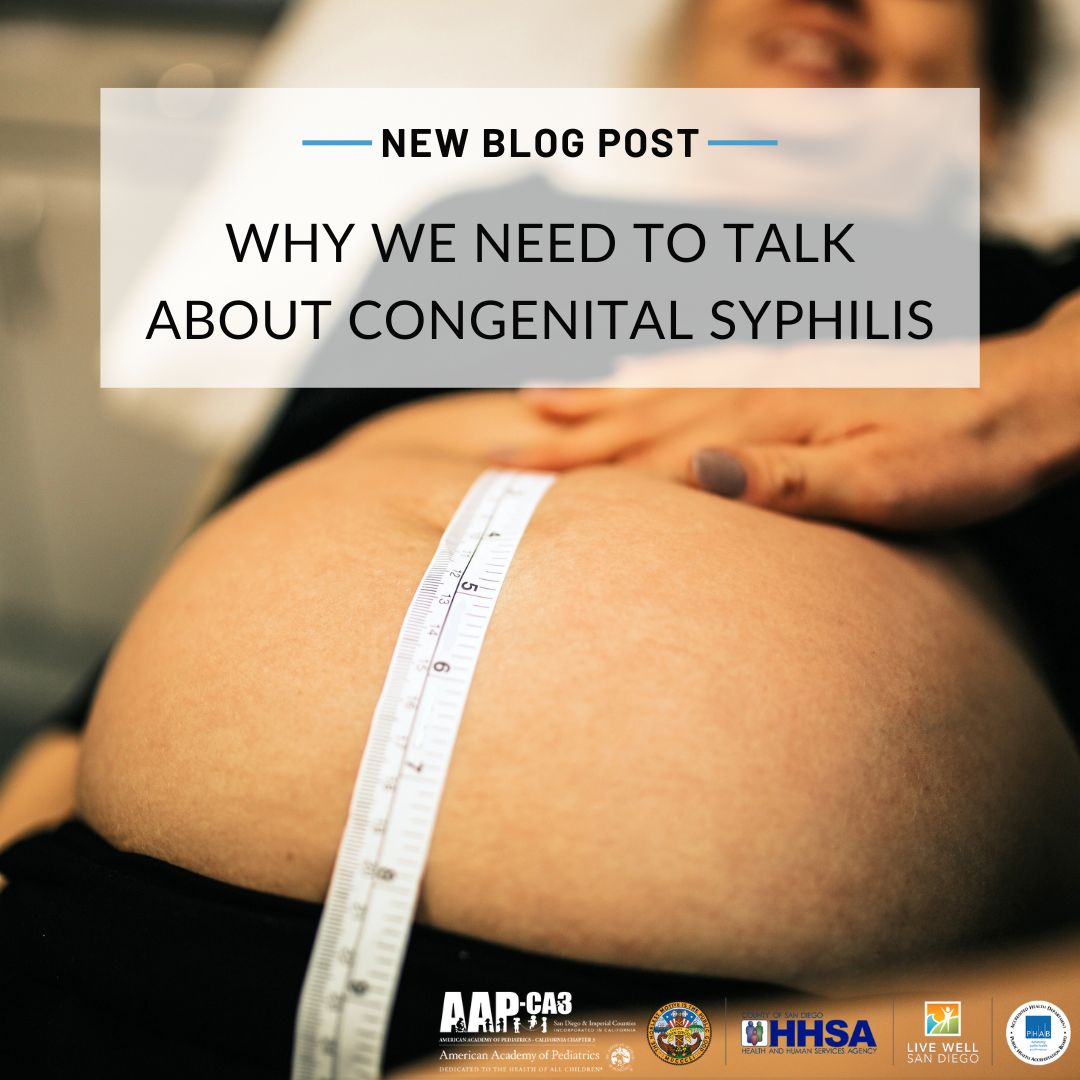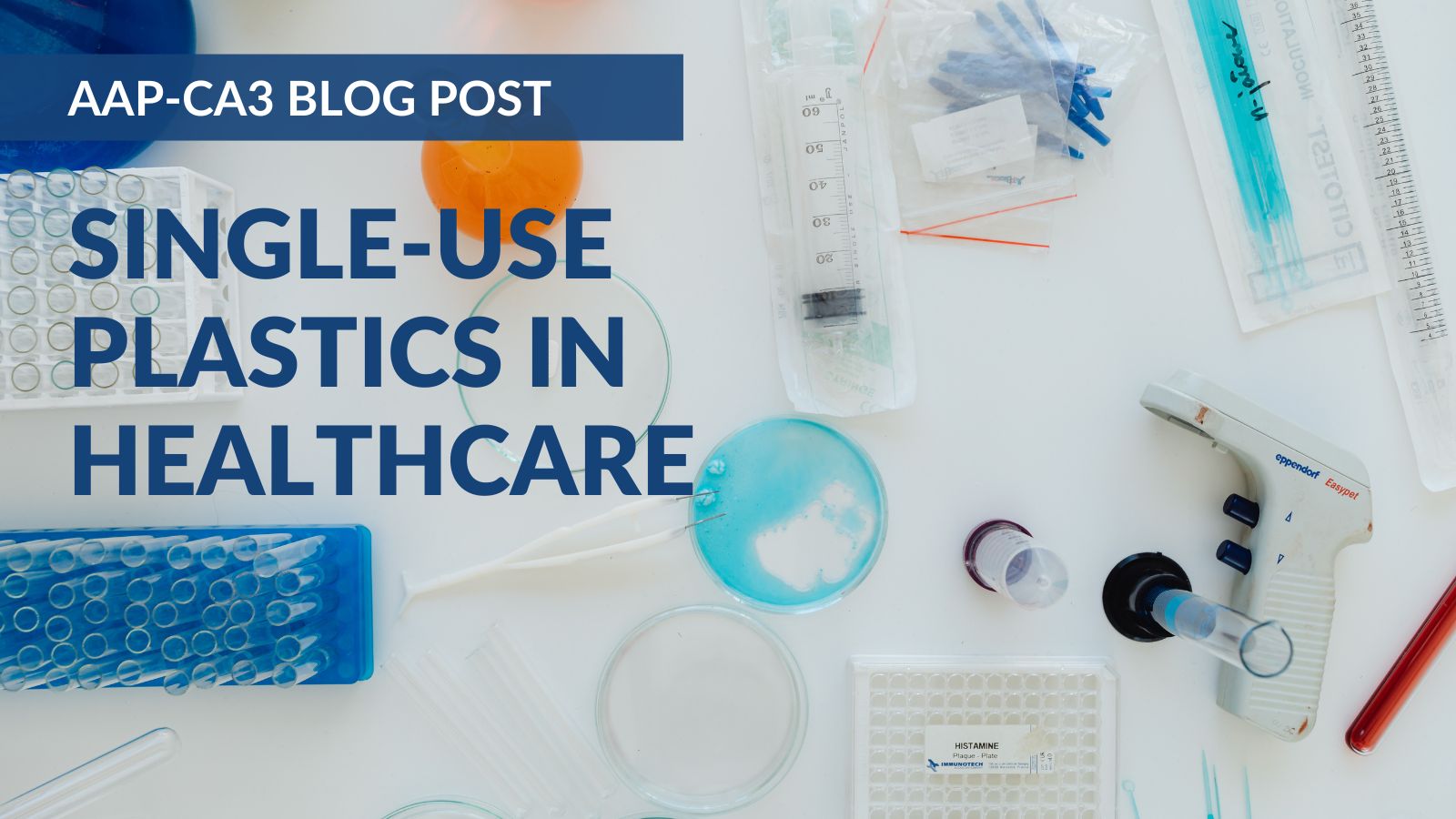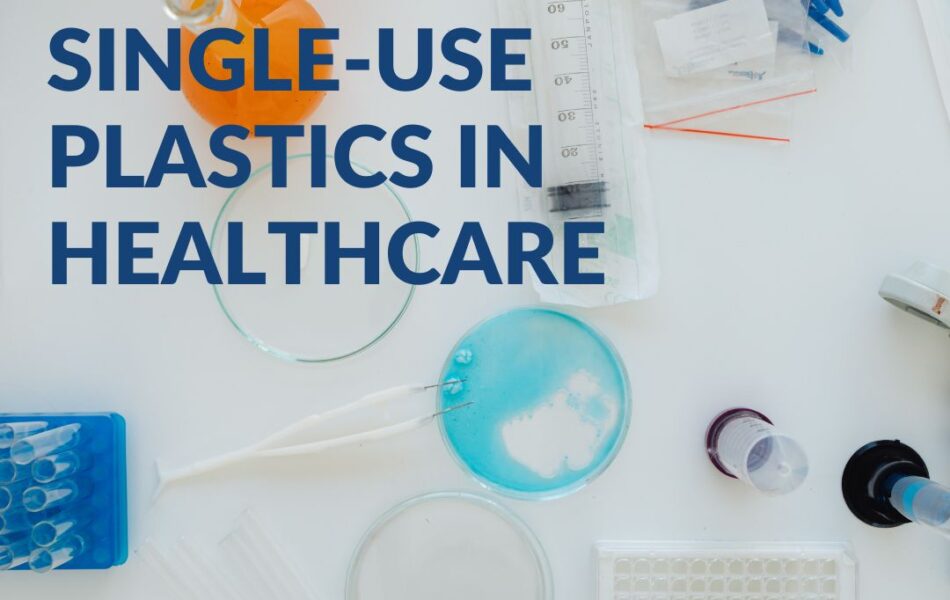


AAP-CA3 Welcomes New Equity, Diversity, & Inclusion Champion, Dr. Chandani DeZure
July 29, 2022


Congenital Syphilis
December 13, 2022
Contributed by:
Ashley Calderon (she/her/ella)
San Diego Pediatricians for Clean Air Intern
Eco-America Climate Advocate
UC Berkeley Undergraduate
Along with the many factors creating a negative impact on climate change, there is the single-use plastics dilemma in healthcare. The global medical plastics market is currently worth $22.26 billion or 2% of total plastics production by value. Overall, the U.S. consumes around 40% of medical devices manufactured globally1. This indicates that plastics have become an essential component of our everyday lives and medical management. However, despite having the convenience of durable, lightweight, and affordable materials, single-use plastics are disproportionately impacting the environment. Plastics originate as fossil fuels and emit greenhouse gasses into the atmosphere. Globally, about 40% of plastics are used as packaging – like the medical equipment physicians use daily 2.
Plastic packaging can be processed in three ways: landfill, incineration, or recycling. Notably, incineration facilities are built near communities of color and low-income populations. This perpetuates public health disparities highlighting that there are systemically racial environmental inequalities. The air those families breathe during childhood can lead to poor health outcomes as they grow into adulthood3. Understanding and spreading this message can raise awareness and hopefully persuade more people to get involved in climate change2. Vi Thuy Nguyen, pediatrician, founder of San Diego Pediatricians for Clean Air (SDPCA), and AAP-CA3 member decided to create a ‘reducing single-use plastics resolution’ in partnership with everyone in the SDPCA.
To build momentum on this resolution, I helped put together a webinar for the San Diego healthcare landscape. Conducted during a busy lunchtime, the live session and the recording reached about 40 people. They included 20 MDs (10 within Kaiser and ten outside of Kaiser, especially Sharp), ten non-MDs, including nursing researchers and front-line nursing staff, and ten physicians for non-CME credit who were inspired through the different sustainability Facebook groups. By joining forces, these stakeholders from different organizations banded together to promote a resistance against single-use/disposable plastics in healthcare. The guest panelists who presented were Olivia Angus (California Surfrider), Kristin Hampshire MD (author of SD-UT op-ed on single-use plastics), Vanessa Rojas RN (Kaiser) and our own Priyanka Patel (AAP Single Use Plastics Resolution Team). In total, there were 25 attendees including, Mitzi Mayer, a local documentary filmmaker doing a short film on single-use plastics and its health effects.
Dr. Nguyen opened the presentation with a wonderful update on her current single-use plastics work. Advocating and wanting to change the environment helped her get past the burnout she faced years ago in her career. Since then, she has been able to partner with many other amazing physicians such as Mallory Zhang MD from Kaiser Permanente’s green team in an effort to create change. Dr. Zang is currently making a national effort to bring back metal speculums, to reduce the amount of plastics being used in examinations. Next, I was able to contribute factual information regarding the impact of plastics and how that relates to our healthcare systems. After laying out the conference foundation, I introduced Olivia Angus, who shared her activist approach to climate change. Olivia volunteers with the Surfrider Foundation as a public policy partner. She also created a green team in the LVAD division at Abbott, the medical device company where she works. Kristin Hampshire, MD shared her life-changing experience of attending a lecture on endocrine-disrupting chemicals that are largely found in plastics! This energy carried forward into her career. Vanessa Rojas, a registered nurse representing Kaiser San Diego Pediatrics Ambulatory Care Nursing Leadership, spoke of her efforts to switch from plastic basins to paper carton basins that physicians are transitioning to use instead. She also highlighted an important topic: It required that many physicians be educated about the importance of joining the cause – exactly what Pryanka Patel is doing to improve resident physician participation on the green team at UCSD, she shared.
Overall, creating this webinar was an amazing experience. Having so many healthcare providers come together and share movements that are happening in their communities. It made me realize that to combat climate change we must create a multifaceted approach to perpetuate the cultural shift of valuing the leaves we walk by and the air we inhale.
About 20 people watched the webinar recording. This webinar inspired others to be environmentally conscious of water filtration instead of using plastic bottles and extending that into their patient care.
Another realization I came to is that you don’t need a degree to advocate for this cause. Growing up, I never had role models, but I looked for one in every phase of my life. I am grateful to have Dr. Vi Thuy Nguyen to support and elevate my voice by showing me that it is possible to speak to other doctors and express my concerns about air quality and reducing single-use plastics in hospitals. Everyone was receptive and collaborative in the discussion, breaking barriers and notions of the perceived ivy tower that can be academia and healthcare.
With this sense of community encouragement, I feel as if SDPCA will continue to evolve as an organization that is recognized, and input is valued by more than just the city of San Diego but nationally as well. Next on our agenda is to get youth involved in advocacy at local government level, including on proclamations in preparation for Children’s Environmental Health Day on Thursday, October 13, and creating a national Youth Art Exhibition spreading into states such as California, Oregon, and New York.
References
1 https://www.grandviewresearch.com/industry-analysis/medical-plastics-market
2 https://yaleclimateconnections.org/2019/08/how-plastics-contribute-to-climate-change/


